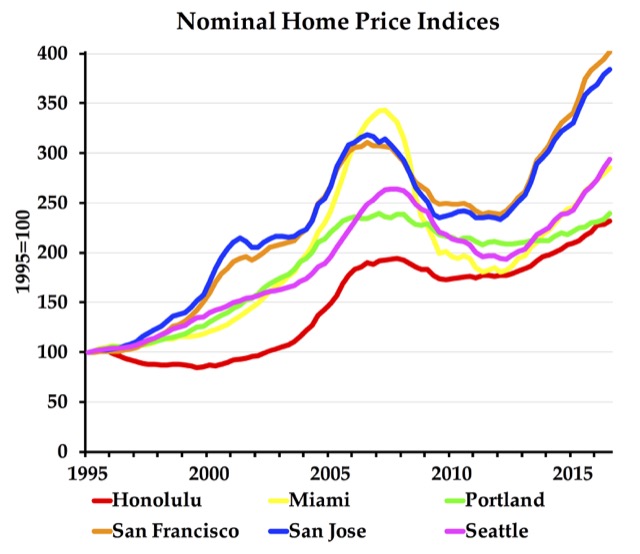Because the past few years have seen the slowest recovery from a recession on record, the Federal Reserve Bank has been keeping interest rates low and in fact cutting them to almost zero. But this has raised concerns among leading bankers that the low rates are producing another asset bubble, including another housing bubble.

The above graph shows the home price index for several metropolitan areas calculated by the Federal Housing Finance Agency using the Case-Shiller method. (The official Case-Shiller Index published by Standard & Poors doesn’t include as many metropolitan areas as the FHFA index.) It shows that, not only are housing prices rising again, in some urban areas–on the chart, Honolulu, San Francisco-Oakland, San Jose, and Seattle–already have prices much greater than they were at the peak of the 2006 bubble. It seems likely that these prices are going to crash again soon.







